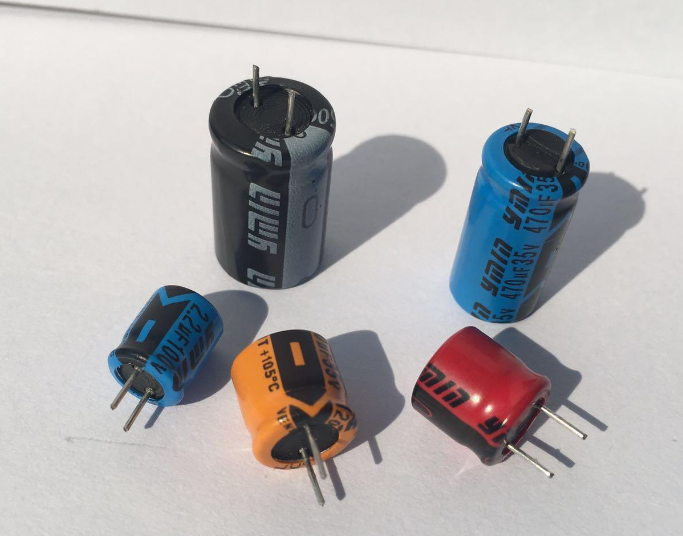Steps to find impedance
Determine the type and value of the component in the circuit
Examine the circuit carefully and determine the types of components present in it and their numerical values. Common components include resistors, inductors, and capacitors. Record the value of each component for subsequent calculation.

Use the appropriate formula to calculate the impedance or reactance of each component
The impedance or reactance of each component is calculated using the appropriate formula, depending on the type and value of the component. For resistance, the impedance is equal to the resistance value itself; For inductors and capacitors, the impedance needs to be calculated according to frequency, using the following formula respectively:
The impedance of the inductor (inductive reactance) : ZL = jωl, where j is the imaginary unit, ωis the angular frequency, and L is the inductance value (in Henry).
Impedance (reactance) of a capacitive element: ZC = 1/(jωC), where j is an imaginary unit, ω is the angular frequency, and C is the capacitance value (in farads).
These formulas take into account the frequency response of the component.
Consider the circuit topology and how the components are connected
After calculating the impedance or reactance of each component, consider the topology of the circuit and how the components are connected, such as in parallel or in series. The impedance or reactance is combined using an appropriate calculation method, depending on the connection.
Series connection: When components are connected in a series connection manner, their impedance or reactance can be directly added to obtain the total impedance or reactance of the series connection. The formula is as follows:
Ztotal = Z1 Z2
For multiple impedance elements in series, the impedance can be added to obtain:
Ztotal = Z1 Z2 ... ZN
Parallel connections: When components are connected in parallel, their impedance or reactance is calculated using the inverse impedance rule. For two elements in parallel, the total impedance or reactance can be calculated by the following formula:
1/Ztotal = 1/Z1 1/Z2
For multiple impedance elements in parallel, the inverse impedance rule can be generalized to N components:
1/Ztotal = 1/Z1 1/Z2 ... 1/ZN
Where Ztotal is the total impedance or reactance, and Z1 and Z2 are the impedance or reactance of parallel components.
According to the topology of the circuit, the impedance or reactance of the component is combined using the corresponding connection mode.
Add all impedances or reactance to get the total impedance or reactance
The total impedance or reactance is obtained by adding all the impedances or reactance according to the circuit topology and the way the components are connected. This will be the overall response of the entire circuit to AC power.
Understand the impedance Z of the circuit
Definition and basic concepts of impedance
Impedance is a physical quantity used to describe the degree to which a circuit impedes alternating current. It is similar to a resistor, but is suitable for AC circuits. Impedance takes into account not only the resistance in the circuit, but also the effect of components such as inductors and capacitors on the current. The unit of impedance is ohm (Ω).
The complex representation of impedance
Impedance is usually represented by a complex number, where the real part represents the resistive part of the impedance and the imaginary part represents the reactance part of the impedance. The complex representation is Z = R jX, where R is the real part (resistance) of the impedance, X is the imaginary part (reactance) of the impedance, and j is the imaginary unit.
The importance and application of impedance in AC circuits
Impedance is one of the characteristics of a circuit's response to alternating current. It describes the degree to which a circuit blocks alternating current of different frequencies. By knowing the impedance of the circuit, it is possible to predict the current response of the circuit to different frequencies and design the appropriate circuit to meet the specific needs.
Impedance plays an important role in frequency domain analysis. Frequency domain analysis is calculated and analyzed in the complex plane by expressing the impedance of the component in the circuit as a complex number. By analyzing the amplitude and phase Angle of the impedance, the frequency response and phase difference of the circuit can be obtained.
Impedance matching is an important concept in AC circuit design. By adjusting the impedance in the circuit, the maximum signal transmission and power transmission efficiency can be achieved. Impedance matching can avoid signal reflection and power loss and improve circuit performance.
Impedance plays a key role in filter design. Filters are used to select signals within a specific frequency range and suppress signals at other frequencies. By selecting suitable impedance and reactance elements, filters can be designed to meet different frequency response requirements.
In summary, knowing the impedance of a circuit can help us understand the response characteristics of a circuit to alternating current, perform frequency domain analysis, perform impedance matching, and design filters, among other applications. Impedance plays an important role in the analysis and design of AC circuits.
How to calculate the reactance
Definition and basic concepts of reactance
Capacitive reactance is the impedance of the capacitor to the alternating current, which indicates the degree of obstruction of the capacitor to the current. The capacitive reactance is related to the capacitance value of the capacitor and the frequency of the current. The unit of resistance is ohm (Ω).
The relationship between capacitive reactance and capacitance and frequency
There is a direct relationship between capacitance and frequency. The capacitive reactance decreases with the increase of frequency and is inversely proportional to the capacitance. At a lower frequency, the capacitance reactance is larger, and the capacitor's obstruction to the current is larger. At higher frequencies, the capacitance reactance is smaller, and the capacitor's obstruction to the current is smaller.
Use the formula to calculate the reactance
The capacitive reactance can be calculated using the following formula: ZC = 1/(jωC), where ZC is the capacitive reactance, j is the imaginary unit, ω is the angular frequency, and C is the capacitance value in farads. This formula represents the relationship between the capacitive reactance and the frequency and capacitance values.
Specific calculation steps:
Determine the capacitance value of the capacitor (C) and the frequency of the AC current (f).
Convert the frequency (f) to the angular frequency (ω) using the formula: ω = 2πf.
The angular frequency (ω) and capacitance value (C) are substituted into the volumetric reactance formula: ZC = 1/(jωC).
The result of the calculation is the bulk reactance (ZC), in ohms (Ω).
The role and influence of capacitive reactance in the circuit
Isolation and filtering: Capacitive reactance can be used to isolate and filter signals in a specific frequency range. In the circuit, by choosing the appropriate capacitance value and frequency, the specific frequency signal can be blocked or passed.
Phase difference: The response of the capacitive reactance to alternating current involves a phase difference. The phase difference is the time offset between current and voltage. In a capacitor, the current is 90 degrees ahead of the voltage. This phase difference is important for some applications, such as power factor correction.
Circuit stability: The presence of capacitive reactance in the circuit may affect the stability of the circuit. The capacitive reactance of a capacitor can interact with the impedance of other components, resulting in a change in the frequency response of the circuit. Therefore, it is necessary to consider the influence of tolerance and reactance in circuit design to ensure stability and performance.
Conclusion
Mastering methods for calculating impedance and reactance is essential for understanding and analyzing circuits. By correctly calculating impedance and reactance, we are able to better design and optimize circuits to meet specific needs and applications. By following the steps for finding impedance, understanding the guidelines for circuit impedance calculation, methods for calculating capacitive and capacitive reactance, and steps for calculating circuit impedance, readers will be able to approach circuit design and analysis tasks related to impedance and reactance with more confidence.
Here is a useful video to help you understand deeper:




